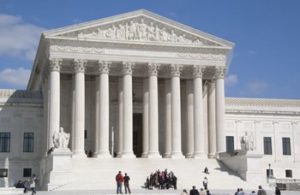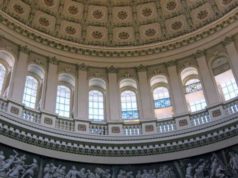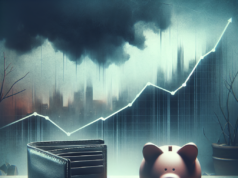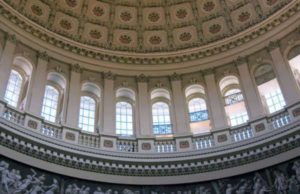In recent months, the United States has witnessed a significant increase in bankruptcy filings, raising alarms among economists and policymakers alike. This surge serves as a stark indicator of the ongoing economic turmoil affecting both consumers and businesses. As financial pressures mount due to various factors, understanding the implications of this trend is crucial for anticipating future economic conditions. This article delves into the statistics, contributing factors, demographic impacts, legal processes, and future outlook regarding the rise in bankruptcy filings.
Understanding the Recent Surge in Bankruptcy Filings: Key Statistics and Trends
The latest data from the American Bankruptcy Institute (ABI) reveals a concerning trend: bankruptcy filings have surged by over 30% in the past year, with a notable increase in both consumer and business bankruptcies. In the first quarter of 2023 alone, approximately 40,000 businesses filed for bankruptcy, marking the highest quarterly total since the onset of the COVID-19 pandemic. This surge is not limited to small businesses; larger corporations are also seeking bankruptcy protection, indicating widespread economic distress. Additionally, personal bankruptcy filings have risen, with Chapter 7 and Chapter 13 cases seeing a notable uptick. These statistics highlight a growing trend of financial instability that is affecting a broad spectrum of the economy.
Economic Factors Contributing to the Rise in Bankruptcy Filings Across Various Sectors
Several economic factors are contributing to the increase in bankruptcy filings across various sectors. The lingering effects of the COVID-19 pandemic have disrupted supply chains, leading to increased operational costs for businesses. Additionally, the labor market remains volatile, with many companies struggling to retain employees amid rising wage demands. The recent geopolitical tensions and trade disputes have further exacerbated these issues, creating uncertainty in the market. Moreover, industries such as retail, hospitality, and travel, which were already vulnerable, have faced additional pressures from changing consumer behaviors and preferences. As a result, many businesses are finding it increasingly difficult to maintain profitability, leading to a rise in bankruptcy filings.
The Impact of Inflation and Interest Rates on Consumer and Business Bankruptcy Rates
Inflation and rising interest rates are two critical factors influencing the current wave of bankruptcy filings. Over the past year, inflation rates have soared to levels not seen in decades, significantly increasing the cost of living for consumers. As prices for essential goods and services rise, many households are struggling to meet their financial obligations, leading to an increase in personal bankruptcy filings. Simultaneously, the Federal Reserve’s decision to raise interest rates to combat inflation has made borrowing more expensive for businesses. This has resulted in higher costs for loans and credit, further straining the financial health of companies already grappling with increased operational expenses. Consequently, both consumers and businesses are finding themselves in precarious financial situations, prompting a surge in bankruptcy filings.
Analyzing the Demographics of Bankruptcy Filers: Who is Most Affected by Economic Strain?
The demographics of bankruptcy filers reveal a troubling picture of who is most affected by the current economic strain. Data indicates that younger individuals, particularly those aged 25 to 34, are filing for bankruptcy at increasing rates, often due to student loan debt and rising living costs. Additionally, low- to middle-income households are disproportionately represented among bankruptcy filers, as they face greater challenges in managing debt and meeting financial obligations. The pandemic has also exacerbated existing inequalities, with marginalized communities experiencing higher rates of financial distress. Furthermore, small business owners, particularly in sectors like retail and hospitality, are facing significant challenges, leading to a rise in business-related bankruptcies. This demographic analysis underscores the widespread impact of economic turmoil across various segments of society.
Legal Implications and Processes Involved in Filing for Bankruptcy: A Comprehensive Overview
Filing for bankruptcy is a complex legal process that involves several steps and implications for the filer. Individuals and businesses must first determine which type of bankruptcy to file, with Chapter 7 and Chapter 13 being the most common for individuals, while businesses often file under Chapter 11. The process typically begins with the completion of a bankruptcy petition, which includes detailed financial disclosures. Once filed, an automatic stay is enacted, halting most collection actions against the debtor. Creditors are then notified, and a meeting of creditors is scheduled. For individuals, a bankruptcy trustee is appointed to oversee the case, while businesses may continue operations under court supervision during Chapter 11 proceedings. Understanding these legal implications is crucial for those considering bankruptcy as a viable option for financial relief.
Future Outlook: What the Surge in Bankruptcy Filings Means for the Economy Ahead
The surge in bankruptcy filings raises important questions about the future of the economy. As more businesses close their doors and consumers face financial ruin, the ripple effects could lead to increased unemployment rates and reduced consumer spending, further exacerbating economic challenges. Additionally, the rise in bankruptcies may prompt lenders to tighten credit standards, making it more difficult for individuals and businesses to secure financing. This could stifle economic growth and innovation, particularly in sectors already struggling to recover from the pandemic. Policymakers will need to address these challenges proactively, considering measures to support struggling businesses and consumers while fostering a more resilient economic environment. The path ahead will require careful navigation to mitigate the long-term consequences of this surge in bankruptcy filings.
In conclusion, the recent surge in bankruptcy filings serves as a stark reminder of the economic challenges facing individuals and businesses alike. With rising inflation, increasing interest rates, and a volatile job market, many are finding it difficult to maintain financial stability. As we analyze the contributing factors and demographic impacts, it becomes clear that the implications of this trend extend far beyond individual cases. The legal processes involved in bankruptcy filings highlight the complexities of seeking financial relief, while the future outlook raises concerns about the broader economic landscape. Addressing these issues will be crucial for fostering recovery and resilience in the face of ongoing economic turmoil.




















